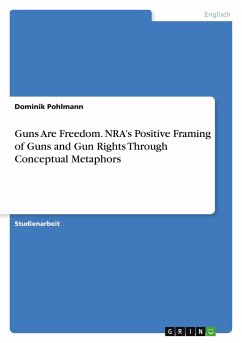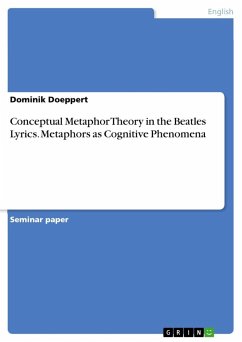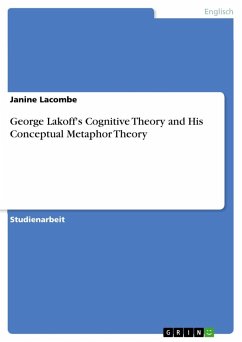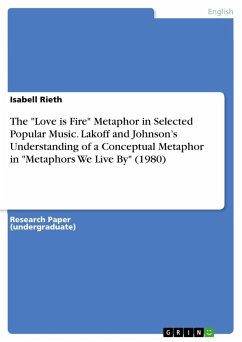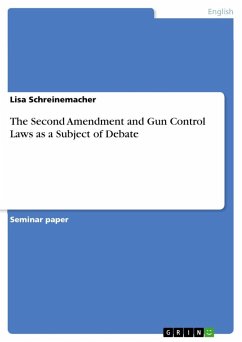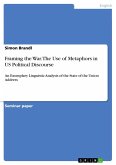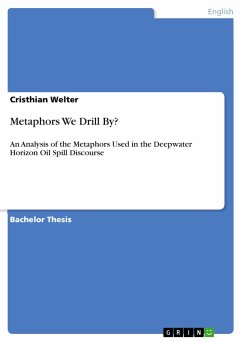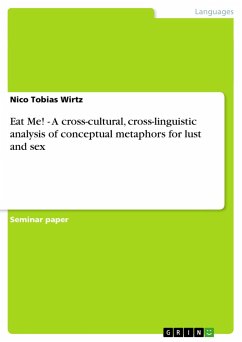Studienarbeit aus dem Jahr 2019 im Fachbereich Anglistik - Linguistik, Note: 1,7, Universität Augsburg, Sprache: Deutsch, Abstract: This paper argues that the NRA uses conceptual metaphors to frame advocacy for gun rights and the possession of guns in a positive way. Based on the methodologies of Semino et al. and Kapranov, a corpus of 261 texts by the NRA will be searched through using LancsBox to find keywords by contrasting the NRA corpus with the Brown Corpus of written texts in American English. Then, these keywords will be investigated with the Whelk-Tool of LancsBox to detect metaphors in the surrounding text which will be compared with the list of conceptual metaphors and frames from MetaNet.The subject of gun rights and the legislation of private gun possession has been one of the major topics in politics of the United States of America for many decades. The preservation of the Second Amendment and especially the 'Right to Keep and Bear Arms' is a ubiquitous matter in debates between the political parties and organizations, and groups which fight for or against stricter regulations of gun rights. One of the main participants is the National Rifle Association (NRA). This association, whose primary goal once was the promotion of science-based rifle shooting to improve the strength of the American troops when it was founded in 1871, has become the biggest lobby group in favor of loose regulation on gun rights to preserve the Second Amendment.This ideology, of course, is conveyed through language and (cognitive) linguistic devices such as frames and metaphorical expressions. Recent studies have discussed the framing within the climate discourse, the use of metaphors for cancer discourse, a text-linguistic approach to the language of the NRA as being religious and the use of metaphors in the gun debate. The foundation of these studies is the notion of frames by Minsky, Fillmore, Tannen and Wallat, as has been collected by Bednarek in a previous work on frames and the conceptual metaphor theory (CMT). CMT is based on the finding "that metaphors are essentially bundles of mappings across frames that occur within domains". Therefore, frames and metaphors are closely connected. This leads to the possibility to search for metaphors - and thus arrive at their relating conceptual metaphor - in texts with the aim of deciphering the frames which are evoked.
